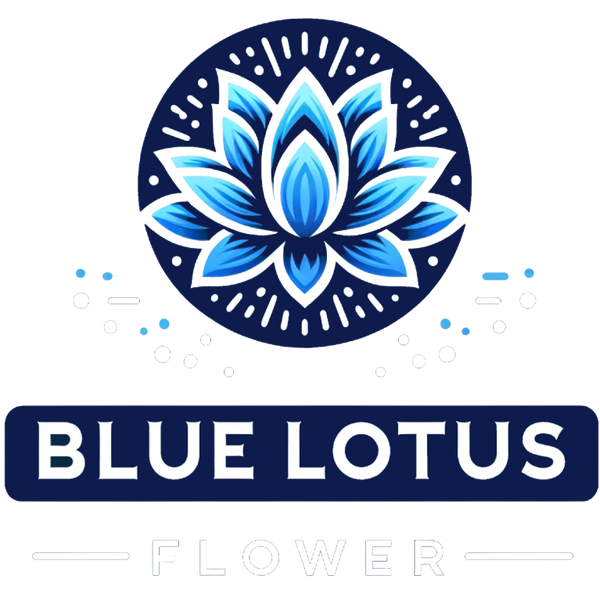The Blue Lotus Flower, scientifically known as Nymphaea caerulea, is a remarkable herb that has captivated cultures around the world due to its stunning beauty and profound medicinal properties. Often referred to as the sacred blue lotus, this flower has a rich history, particularly among ancient Egyptians, who revered it for its calming and euphoric effects. In this article, we’ll explore everything you need to know about Blue lotus tea, derived from flower petals, is a popular choice among herbal enthusiasts., its preparation methods, and important considerations for safe consumption.
What is Blue Lotus Flower (Nymphaea Caerulea) and its Medicinal Uses?
Understanding the Blue Lotus Flower
The blue lotus flower, also known as the sacred blue lotus, is a species of lotus that grows predominantly in the Nile River and other freshwater bodies. This beautiful flower has striking blue petals which bloom at dawn and close at dusk, symbolizing rebirth and tranquility. Traditionally, the flower has been used in various cultures for its medicinal properties, particularly in herbal teas. The blue lotus is rich in alkaloids like nuciferine and apomorphine, which are known to influence dopamine receptors, providing both psychoactive and calming effects. The petals of The blue lotus flower, also known as the sacred lotus, is revered for its beauty and benefits. can be dried and brewed into a soothing tea, making it a popular choice among herbal enthusiasts.
Historical Significance of the Blue Lotus in Ancient Egypt
In ancient Egypt, the blue lotus was more than just a beautiful flower; it held deep spiritual significance. The Egyptians associated the blue lotus with the sun, creation, and the cycle of life. It was often depicted in art and architecture, symbolizing purity and rebirth. The flower was also used in religious rituals and as an offering to deities. The ancient Egyptians believed that the blue lotus could elevate the spirit and induce a state of calm, making it a revered herb in their culture. Its use extended beyond rituals, as they incorporated the flower into their medicinal practices for its soothing properties.
Medicinal Uses of Blue Lotus in Traditional Chinese Medicine
In Traditional Chinese Medicine (TCM), the blue lotus flower is recognized for its medicinal uses. Known as "lan lian hua," it is considered a powerful herb that promotes relaxation and mental clarity. Blue lotus is often used to treat ailments such as insomnia and anxiety, providing a natural remedy for individuals seeking calmness. The tea made from Dried blue lotus flower petals can be used to make soothing teas and tinctures is believed to enhance emotional well-being and support overall health. TCM practitioners value the blue lotus for its ability to harmonize the mind and body, making it an essential part of herbal medicine.
What are the Health Benefits of Drinking Blue Lotus Tea?
Anti-inflammatory Properties of Blue Lotus Tea
One of the significant health benefits of blue lotus tea is its anti-inflammatory properties. The alkaloids found in the blue lotus flower, particularly nuciferine, have been studied for their potential to reduce inflammation in the body. Chronic inflammation is linked to various health issues, including arthritis, heart disease, and even cancer. By incorporating blue lotus tea into your wellness routine, you may experience a decrease in inflammation, leading to improved overall health. Regular consumption of this herbal tea can act as a natural anti-inflammatory agent, supporting your body's healing processes.
How Blue Lotus Tea Can Help Detoxify the Body
Drinking blue lotus tea can also aid in detoxifying the body. The flower has diuretic properties that promote the elimination of toxins through increased urine production. This natural detoxification process is essential for maintaining a healthy body, as it helps to flush out harmful substances. Additionally, blue lotus tea is rich in antioxidants that combat oxidative stress, further supporting your body’s detoxification efforts. By drinking this soothing herbal tea, you can enhance your body's ability to cleanse itself, promoting better health and vitality.
Blue Lotus Tea and Its Psychoactive Effects
Another fascinating aspect of blue lotus tea is its psychoactive effects. The flower contains compounds that can induce a state of euphoria and relaxation, making it a popular choice for those seeking a natural way to unwind. The psychoactive properties of the blue lotus are attributed to the alkaloids, which interact with dopamine receptors in the brain. This interaction can enhance mood and promote feelings of happiness. However, it's essential to consume blue lotus tea mindfully, as its effects can vary depending on individual tolerance and dosage.
How to Prepare and Consume Blue Lotus Flower Tea?
Steps to Make Blue Lotus Tea from Dried Blue Lotus Flowers
Preparing blue lotus tea from dried blue lotus flowers is a simple and enjoyable process. Start by gathering dried blue lotus petals, which can be sourced from reputable herbal shops or online vendors. Begin by boiling water in a pot, then reduce the heat and add approximately one to two teaspoons of dried blue lotus petals for every cup of water. Allow the petals to steep for about 10 to 15 minutes, allowing their flavors and medicinal properties to infuse into the water. Once steeped, strain the tea to remove the petals and enjoy it warm. You may sweeten it with honey or add lemon for an extra layer of flavor.
Alternative Methods: Blue Lotus Tincture and Extract
For those who prefer a more concentrated form of the blue lotus, tinctures and extracts are excellent alternatives. A blue lotus tincture is created by soaking the dried flower in alcohol, which extracts the beneficial compounds. This method produces a potent herbal remedy that can be added to water or taken directly. Blue lotus extracts are also available, providing a concentrated dose of the flower’s beneficial properties. When using these forms, it’s crucial to follow the recommended dosage to ensure safe and effective consumption, especially when used in traditional Chinese medicine.
Recommended Dosage for Enjoying Blue Lotus Tea
The recommended dosage for enjoying blue lotus tea typically involves one to two teaspoons of dried blue lotus petals per cup of water. For tinctures and extracts, it’s best to adhere to the dosage instructions provided by the manufacturer. Generally, starting with a lower dose and gradually increasing it allows your body to adjust to the effects of the blue lotus. As with any herbal product, individual responses may vary, so it's essential to listen to your body and consult with a healthcare professional if you have concerns.
Where to Buy Blue Lotus Flower and Related Products?
Buying Dried Blue Lotus Flower in Bulk
If you're interested in incorporating blue lotus tea into your daily routine, buying dried blue lotus flowers in bulk can be a cost-effective option. Many online retailers specialize in herbal products and offer bulk purchasing options, allowing you to stock up on this versatile herb. When selecting a supplier, ensure they provide high-quality, organic dried blue lotus to maximize the health benefits. Look for customer reviews and product certifications to ensure you’re making a wise purchase.
Finding Quality Blue Lotus Extract and Tincture
In addition to dried petals, you may want to explore blue lotus extracts and tinctures. These concentrated forms of the herb can provide quicker effects and are convenient for on-the-go use. Seek out reputable brands that prioritize quality and transparency in their production processes. It's essential to read product descriptions and ingredient lists to find extracts that contain pure blue lotus without unnecessary additives, including details and prices about blue lotus.
Online Stores vs. Local Herbal Shops
When deciding where to buy blue lotus products, consider the advantages of both online stores and local herbal shops, as well as the price of blue lotus. Online retailers often provide a wider selection and competitive prices, along with the convenience of home delivery. However, local herbal shops allow you to interact with knowledgeable staff who can offer advice on selecting the right products for your needs. Whichever option you choose, ensure that the products meet quality standards to enjoy the full benefits of blue lotus.
What are the Side Effects and Precautions of Blue Lotus Tea?
Possible Side Effects of Blue Lotus Consumption
While blue lotus tea is generally considered safe for most individuals, it can cause side effects in some cases. Mild side effects may include dizziness, nausea, or allergic reactions, particularly if consumed in excessive amounts. It’s crucial to start with a small dosage to gauge your body’s response before increasing your intake. If you experience any adverse effects, discontinue use and consult a healthcare professional for guidance.
Interactions with Medications
Blue lotus may interact with certain medications, particularly those that affect the central nervous system. If you are taking prescription medications or have underlying health conditions, it's important to consult with a healthcare provider before adding blue lotus tea to your regimen. They can provide personalized advice and help you avoid potential interactions, ensuring your safety and well-being.
Safe Usage Guidelines for Blue Lotus Tea
To safely enjoy the benefits of blue lotus tea, adhere to recommended dosages and avoid combining it with other sedatives or alcohol, as this can amplify its calming effects. Pregnant or breastfeeding individuals should exercise caution and seek medical advice before consuming blue lotus products, as blue lotus is rarely used in these cases. By following these guidelines, you can incorporate this ancient herb into your wellness routine while minimizing risks.
What is Blue Lotus Flower (Nymphaea Caerulea) Tea?
Blue Lotus Flower, scientifically known as Nymphaea Caerulea, is a beautiful aquatic plant that produces striking blue flowers. It has been revered in various cultures, particularly by the ancient Egyptians, for its aesthetic beauty and psychoactive properties. Blue lotus tea is made from the dried petals of the flower, which are steeped in hot water to extract their beneficial properties. This herbal tea is celebrated for its calming effects and is often associated with enhanced relaxation and euphoria.
What are the health benefits of Blue Lotus Flower Tea?
Blue Lotus tea, is made from the flower petals of the sacred lotus. offers a myriad of health benefits. It is known for its anti-inflammatory properties, which can help reduce swelling and discomfort. Additionally, the active compounds in the dried blue lotus flower, such as nuciferine, may promote relaxation by affecting the dopamine receptor pathways in the brain, leading to a sense of calm and improved mood. Many users also report enhanced creativity and increased libido after consuming this medicinal herb.
How does Blue Lotus Tea affect the mind and body?
The effects of blue lotus tea on the mind and body can be quite profound. The tea is often described as having a euphoric effect, which can lead to heightened sensations and a sense of bliss. This is largely due to the presence of apomorphine and nuciferine, alkaloids in the sacred lotus plant. These compounds interact with the brain's dopamine receptors, which play a crucial role in mood regulation. As a result, many people use blue lotus as a natural way to alleviate stress and anxiety.
Can Blue Lotus Tea be used in traditional medicine?
Yes, the blue lotus flower has a long history of use in various traditional medicinal practices, including Traditional Chinese Medicine (TCM) and Ayurvedic medicine. In TCM, it is often utilized for its calming properties and to aid in the treatment of insomnia and anxiety. Its medicinal uses extend to promoting relaxation, enhancing mood, and even aiding reproductive health. The versatility of this medicinal herb makes it a valuable addition to herbal remedies.

